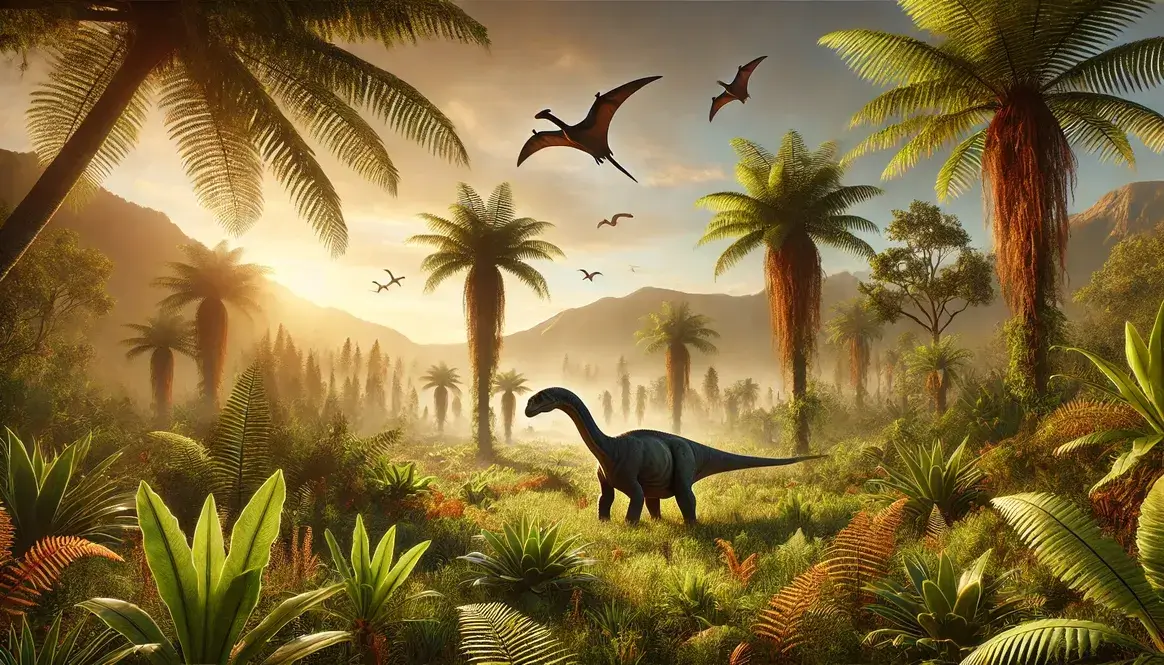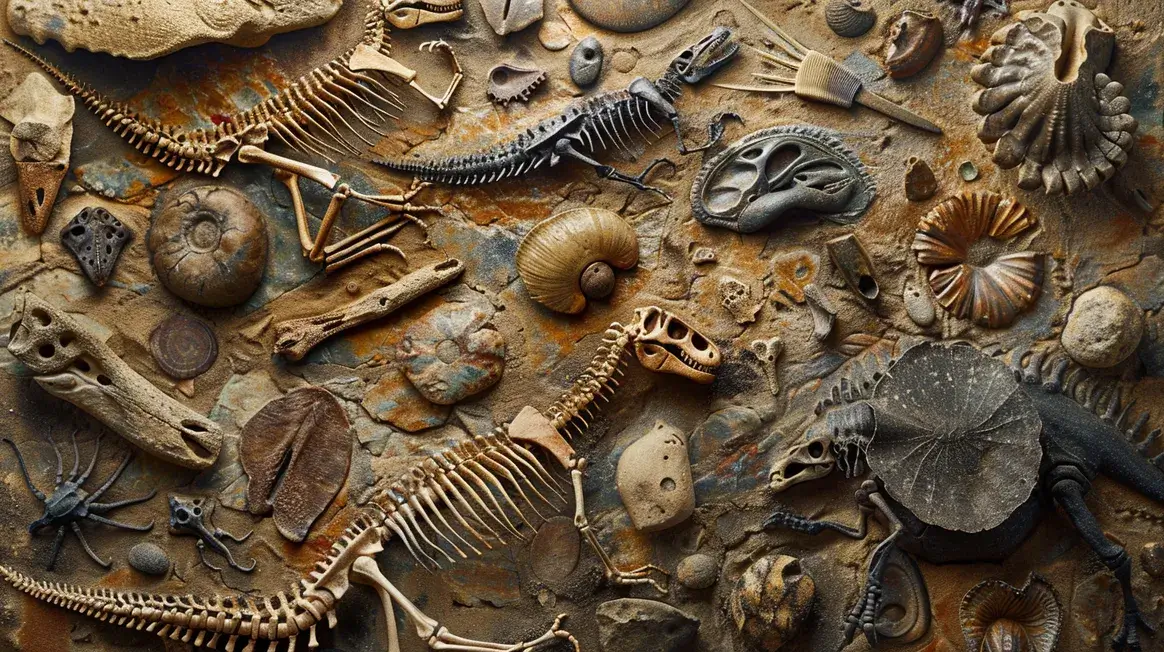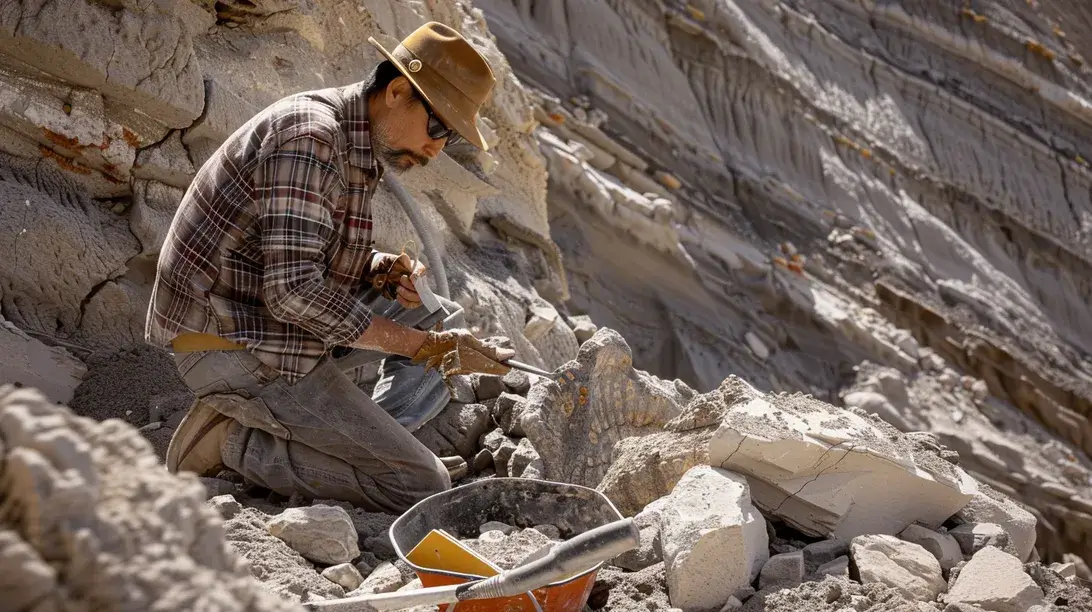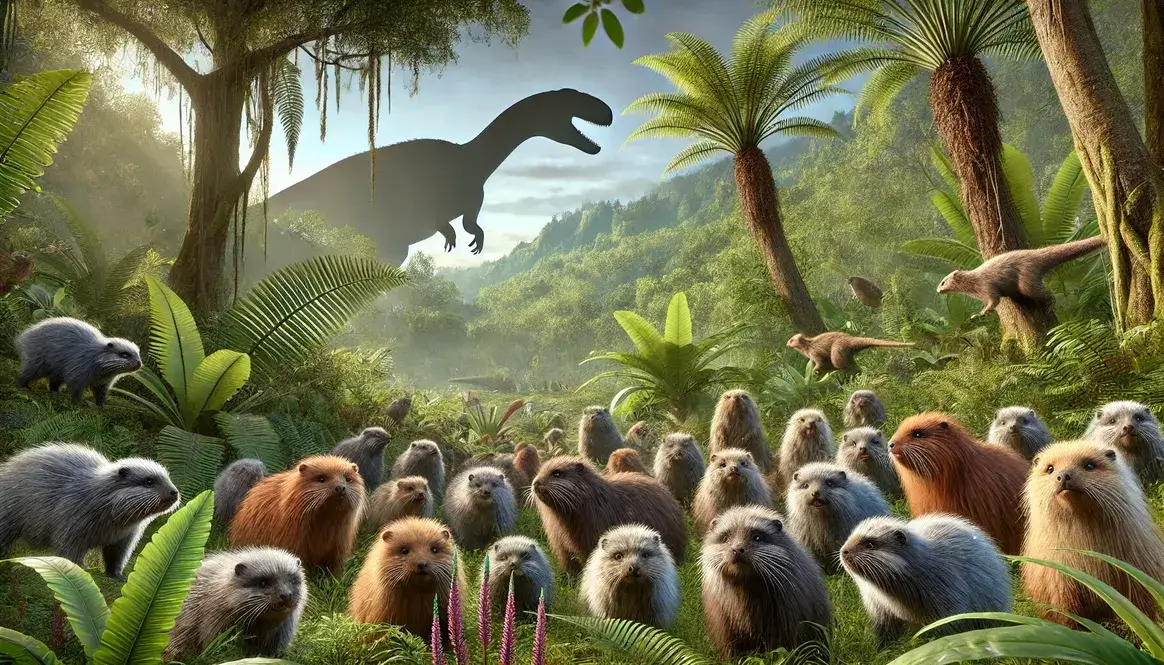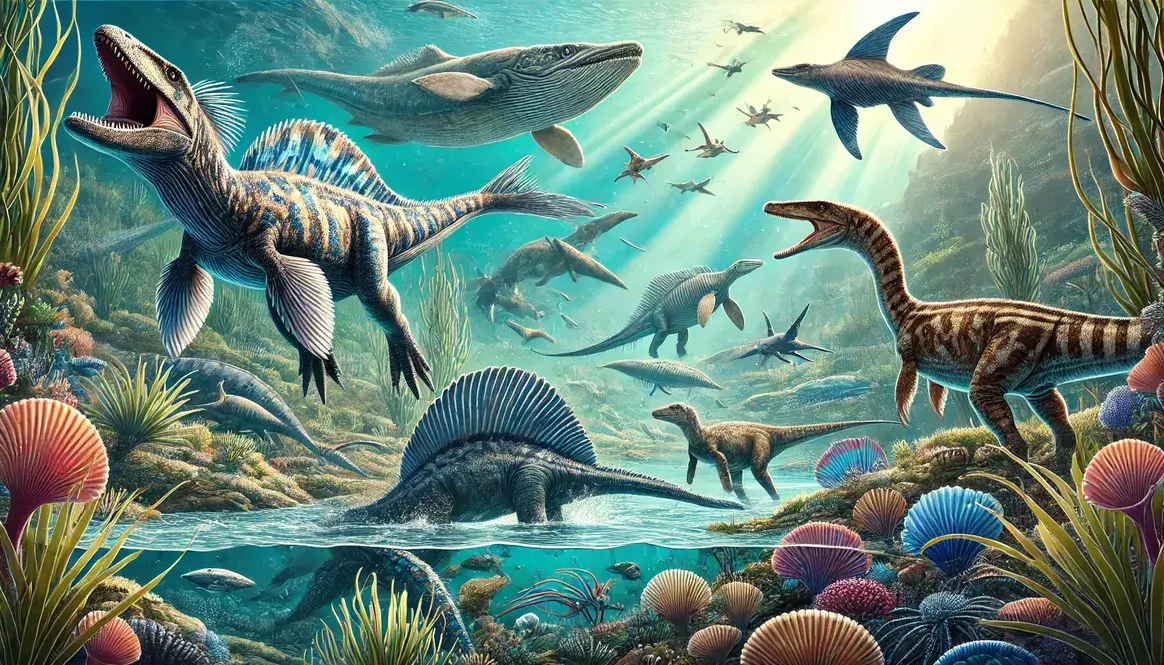As the curtain fell on the Triassic Period about 201 million years ago, Earth was poised for a dramatic climate shift. The Triassic-Jurassic extinction had wiped the slate clean, setting the stage for the rise of dinosaurs in a world that was about to heat up significantly.
The early Jurassic climate was like a prelude to a steamy symphony. As the dust settled from the mass extinction event, the world began to warm. This warming trend wasn’t a gentle slope but more like a climate rollercoaster, with temperatures swinging up and down before settling into the greenhouse conditions that would define much of the period.
Jurassic Climate: A Greenhouse World Emerges
As we venture deeper into the Jurassic, we find ourselves in a world that would feel alien to us today. The Jurassic climate was characterized by warm, humid conditions that blanketed much of the planet. It was a time when even the poles were free of ice, and lush vegetation thrived in areas that are now barren tundra.
Let’s break down the numbers to get a clearer picture of this hothouse world:
| Climate Factor | Jurassic Era | Modern Era |
|---|---|---|
| Average Global Temperature | 16-21°C (61-70°F) | 14°C (57°F) |
| CO2 Levels | 1000-2000 ppm | 420 ppm |
| Sea Level | Up to 200m higher | Current level |
These warm temperatures and high CO2 levels created a paradise for plant life, which in turn supported the massive herbivorous dinosaurs like the long-necked sauropods.
Factors Shaping the Jurassic Climate
The Jurassic climate didn’t just happen by chance. Several key factors worked together to create and maintain this greenhouse world.
Plate Tectonics and Continental Drift
The breakup of the supercontinent Pangaea played a starring role in shaping Jurassic climate patterns. As landmasses drifted apart, new oceans formed, and existing ones expanded. This continental shuffle had far-reaching effects on global climate:
- It altered wind patterns and ocean currents.
- Created new coastal areas and inland seas.
- Changed the distribution of heat across the planet.
The Jurassic Pangaea wasn’t the tightly-packed supercontinent of the Triassic. As it began to fragment, the climate became less extreme, with fewer harsh interior deserts and more temperate coastal regions.
Volcanic Activity and Atmospheric Composition
The Jurassic was a time of intense volcanic activity, particularly in the early stages of the period. This uptick in volcanism pumped enormous amounts of greenhouse gases into the atmosphere, primarily carbon dioxide. The result? A thicker atmospheric blanket that trapped more heat, driving up global temperatures.
Here’s a quick look at how volcanic activity influenced the Jurassic climate:
| Volcanic Effect | Climate Impact |
|---|---|
| CO2 Emissions | Increased greenhouse effect |
| Ash and Aerosols | Short-term cooling, followed by warming |
| Land Formation | Created new habitats and altered weather patterns |
Ocean Currents and Sea Levels
As Pangaea broke apart, the newly formed oceans began to develop their own circulation patterns. These currents played a crucial role in distributing heat around the globe, much like they do today. But with higher sea levels and different continental configurations, the Jurassic oceans behaved quite differently from our modern seas.
Higher sea levels, sometimes up to 200 meters above current levels, led to the formation of vast shallow seas. These warm, shallow waters were perfect incubators for marine life, including the fearsome marine reptiles that ruled the Jurassic oceans.
The interplay between these factors – plate tectonics, volcanism, and ocean circulation – created the perfect conditions for the warm, lush world that we associate with the Jurassic Period. This climate shaped the evolution of life on Earth, setting the stage for the golden age of dinosaurs.
Climate Zones in the Jurassic World
The Jurassic world, while generally warmer than today, wasn’t a uniform hothouse. Earth still had distinct climate zones, each with unique characteristics that shaped the flora and fauna of the time.
Tropical and Subtropical Regions
Imagine stepping into a world of perpetual summer. The equatorial areas of the Jurassic were hot spots in every sense:
- Temperatures averaged 20-30°C (68-86°F) year-round
- Heavy rainfall created lush, humid environments
- Dense vegetation thrived, including ferns, cycads, and early conifers
These tropical paradises were home to a diverse array of dinosaurs. The abundance of plant life supported large herbivore populations, which in turn attracted fearsome Jurassic predators.
Mid-latitude Warm Temperate Zones
Moving away from the equator, the climate became more varied. These regions experienced:
- Warm but not extreme temperatures, ranging from 15-25°C (59-77°F)
- Seasonal variations, though less pronounced than today
- A diverse mix of vegetation adapting to changing seasons
This climatic diversity fostered a wide range of dinosaur species. Some may have migrated seasonally, following food sources as they shifted throughout the year.
Polar Regions: Not So Icy
Perhaps the most striking difference between the Jurassic and our modern world was at the poles. Forget the icy wastelands we know today. Jurassic polar regions were:
Ice-free: No permanent ice caps existed
Relatively warm: Temperatures remained above freezing for most, if not all, of the year
Forested: Cold-adapted conifers and ginkgoes thrived
| Modern Polar Regions | Jurassic Polar Regions |
|---|---|
| Ice caps present | No permanent ice |
| Average temp: below 0°C | Average temp: above 0°C |
| Tundra vegetation | Forests and diverse plant life |
These warm polar forests allowed dinosaurs to inhabit areas now covered in ice. Some species even became year-round residents, adapting to long periods of winter darkness.
Climate Fluctuations Through the Jurassic
The Jurassic climate wasn’t static; it evolved over the period’s 56 million years, shaping the world and its inhabitants.
Early Jurassic: Warming Trends
As the curtain rose on the Jurassic about 201 million years ago, the Earth was shaking off the chill of the late Triassic. CO2 levels began to climb, likely due to increased volcanic activity, setting the stage for a warming world.
This gradual heating trend had far-reaching effects:
- Ice sheets retreated, causing sea levels to rise
- New habitats emerged, spurring dinosaur diversification
- Plant life flourished, providing ample food for herbivorous dinosaurs
The Early Jurassic was a time of transition, laying the groundwork for the explosive diversity of life that would follow.
Middle Jurassic: Peak Warmth
If the Early Jurassic was the warm-up act, the Middle Jurassic (174-163 million years ago) was the main event. Global temperatures soared to their Jurassic peak, creating a world that would seem alien to us today:
- Humid, greenhouse conditions prevailed worldwide
- Sea levels reached their highest points, creating vast shallow seas
- Giant sauropods roamed the lush landscapes
The Jurassic fossil sites from this era reveal a world teeming with life, from the smallest ferns to the largest dinosaurs.
Late Jurassic: Subtle Cooling
As the Jurassic drew to a close (163-145 million years ago), the climate began to shift once more. While still warmer than today, temperatures cooled slightly from their mid-Jurassic peak.
Key changes included:
- More pronounced climate zones
- Increased seasonality
- Evolutionary adaptations in plants and animals
This cooling trend, though subtle, was significant. It may have driven changes that paved the way for the further diversification of dinosaurs in the upcoming Cretaceous period.
From the warming trends of the Early Jurassic to the peak heat of the Middle Jurassic and the subtle cooling of the Late Jurassic, these climate fluctuations played a crucial role in shaping the evolution of life, influencing everything from tiny early mammals of the Jurassic to the mightiest dinosaurs.
Jurassic Climate’s Impact on Life
The Jurassic climate didn’t just set the stage; it was an active player in the drama of life. From lush forests to teeming seas, the warm, humid conditions of this period shaped the evolution and distribution of species in profound ways.
Flourishing Forests and Lush Landscapes
Imagine a world where plants reign supreme. The Jurassic climate, with its warmth and abundant rainfall, created a paradise for plant life. Forests were denser, more diverse, and more widespread than in previous eras.
Key features of Jurassic plant life included:
- Dominance of gymnosperms like conifers and cycads
- Emergence of the first flowering plants towards the end of the period
- Lush fern understories in many forest ecosystems
This abundance of plant life had a cascading effect on the entire ecosystem. More plants meant more food for herbivores, which in turn supported larger populations of carnivores. The Jurassic climate essentially supercharged the entire food web.
Dinosaurs in a Greenhouse World
For dinosaurs, the Jurassic climate was like a golden ticket. The warm, stable conditions allowed them to:
- Grow to enormous sizes (think Jurassic sauropods)
- Spread to nearly every corner of the globe
- Diversify into a wide array of species
The climate also influenced dinosaur behavior and physiology. For example, the lack of extreme cold may have allowed many dinosaurs to maintain high metabolic rates, possibly contributing to their active lifestyles.
Marine Life in Warm Jurassic Seas
While dinosaurs ruled the land, the Jurassic seas were undergoing their own revolution. The warm, shallow seas created by higher sea levels became cradles of marine biodiversity.
Key features of Jurassic marine environments:
- Extensive coral reefs thrived in the warm waters
- Ammonites and belemnites diversified dramatically
- Marine reptiles like ichthyosaurs and plesiosaurs ruled the seas
The Jurassic sea monsters that captured our imagination were direct beneficiaries of these rich marine ecosystems, all made possible by the unique Jurassic climate.
Jurassic Climate Clues: Reading the Rocks
How do we know so much about a climate that existed millions of years ago? The answer lies in the rocks beneath our feet. Scientists use a variety of geological evidence to piece together the Jurassic climate puzzle:
- Fossil plants: The types of plants preserved as fossils can tell us about temperature and rainfall patterns.
- Sedimentary rocks: The composition and structure of these rocks provide clues about ancient environments.
- Chemical signatures: Isotopes in fossils and rocks can reveal information about temperature and atmospheric composition.
Key Jurassic fossil sites that have provided valuable climate information include:
- The Morrison Formation in western North America
- The Solnhofen Limestone in Germany
- The Oxford Clay in England
Each of these sites offers a unique window into the Jurassic world, helping scientists reconstruct its climate with increasing accuracy.
From Jurassic Warmth to Cretaceous Changes
As the curtain fell on the Jurassic, the stage was set for the climatic drama of the Cretaceous. The cooling trend that began in the Late Jurassic would continue, albeit with some significant twists and turns.
The transition from Jurassic to Cretaceous saw:
- Further breakup of the continents
- Changes in ocean circulation patterns
- The continued rise of flowering plants
These changes would have profound effects on climate and life in the Cretaceous. But that’s a story for another time…
Curious about how the world changed as it moved from the Jurassic to the Cretaceous? Check out our article on the Jurassic-Cretaceous transition to learn more about this fascinating period of Earth’s history.

